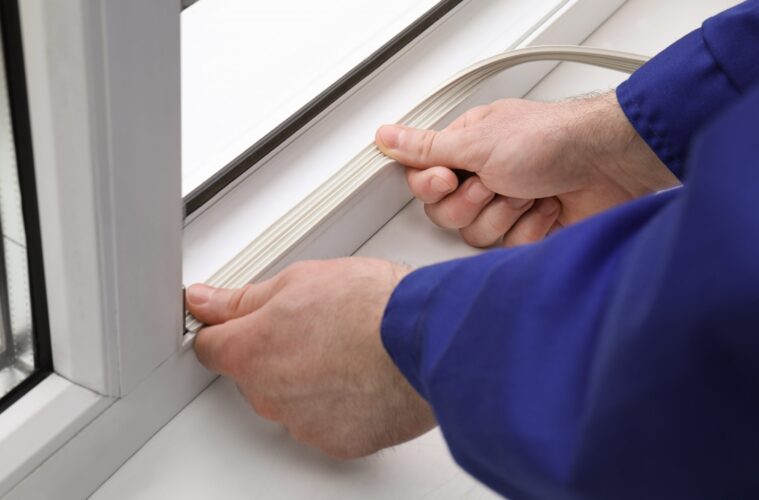Draught-proofing your home isn’t just about comfort – it’s a step towards energy efficiency an d reducing your gas and electric bill. Not only can it help significantly lower your heating costs, draught-proofing also contributes to a comfortable living environment.
Draughts are currents of cold air entering a warm space. They are most noticeable near windows and doors but can be felt through any gap that connects your home to the outside world. These unwanted breezes reduce the temperature of key living areas by allowing cold air to enter and warm air to escape. This forces your heating system to work harder increasing your energy usage, resulting in higher than expected energy bills. Although controlled ventilation is essential in reducing condensation and dampness identifying unwanted draughty areas is the first step in draught-proofing your room.
This guide will help you identify problem areas, apply appropriate solutions and enjoy a warmer, more energy-efficient home during the harsh winter months. Small changes can have a big impact, both on your wallet and the planet.
Step-by-Step Guide to Draught-Proofing
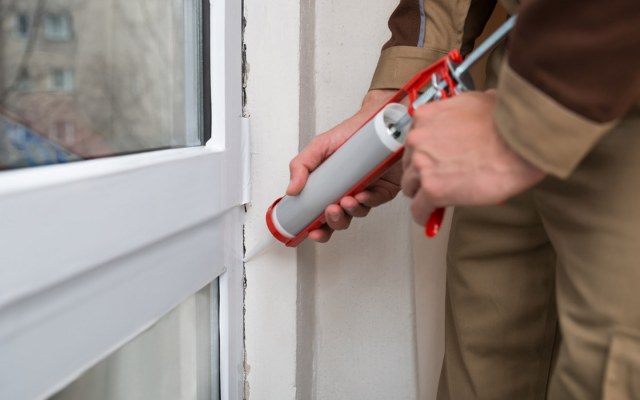
source: pinterest.com
Draught-proofing your home involves identifying the areas that are allowing cold air to enter the room. Whilst draughts can be felt through any gap, some areas are more prone than others to unwanted air leaks. By effectively sealing these points, you can not only improve the thermal comfort of your home but also significantly reduce your energy bills.
Windows
Windows are a common source of draughts that allow cold air into the room through damaged seals or gaps created by ill-positioned hinges. Replacing the rubber seals when they begin to deteriorate is essential in creating an adequate air-tight seal between the window and frame.
There are several materials you can install around your window frames that will act as a secondary glazing seal. Self-adhesive foam strips are generally used on uPVC windows, while brush strips and hinged flap draught excluders are better suited for sash windows.
For an added layer of insulation, you may want to consider secondary glazing or heavy curtains to create an additional insulating barrier between your living space and the outside world. This can be particularly effective for older single-glazed windows or character buildings.
Doors
Draught-proofing external doors is an essential step in enhancing the energy efficiency and comfort of your home. Rubber seals around these areas can be easily damaged or over compressed creating a potential area for cold air to enter the room.
You can use a variety of materials such as self-adhesive foam strips, brush or wiper seals and draught excluders to draught-proof an external door. These materials are designed to fill gaps around the edges and underneath the door, preventing cold air from entering and warm air from escaping. You should also consider air leaks from keyholes and letterboxes, which can be fitted with specially designed covers to reduce the flow of air.
It is also essential to be mindful of closing and draught-proofing internal doors that lead to a room you don’t normally heat. Closing these doors or using draught excluders will prevent the cold air from entering your daily living areas.
Floors and Skirting Boards
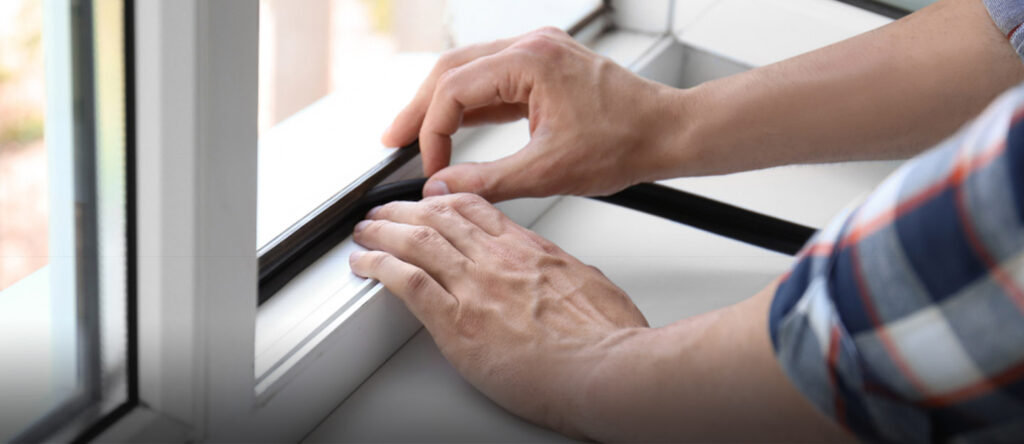
source: pinterst.com
Using fillers to stop draughts originating from floors and skirting boards is a practical and effective method for enhancing the energy efficiency of your home. Gaps and cracks in floorboards and along skirting boards can be significant sources of cold air infiltration.
Houses without carpet or adequate under-floor insulation may experience draughts originating from gaps in floorboards or skirting boats. As these areas of your home often contract and expand with temperature changes, they should be filled with flexible fillers such as silicone sealants or a decorators caulk. This will allow for movement in the house whilst creating a barrier that prevents draughts.
Regular inspection and maintenance of these sealed areas ensure long-term effectiveness in draught-proofing your home.
Chimneys and Fireplaces
Draught-proofing your chimney or fireplace is an important aspect of home insulation, particularly in homes where the fireplace is not in regular use. An unused chimney can act as a large draught source, letting in cold air and allowing warm air to escape.
One effective solution for stopping draughts originating from this area is to use a chimney balloon, which is an inflatable device designed to fit inside the chimney hole. It creates a seal that blocks draughts but can be easily removed when you want to use the fireplace.
Always remember to remove any draught-proofing devices before lighting a fire to ensure safety and proper ventilation. Regular checks and maintenance of these devices are crucial to ensure they continue to function effectively and safely.
Loft Hatches
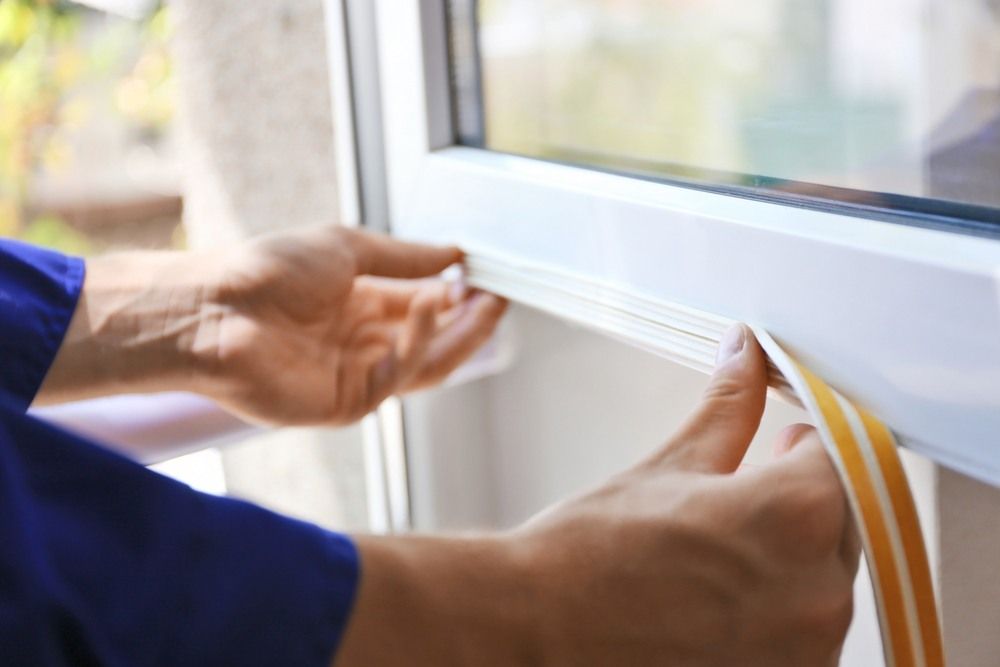
source: pinterest.com
Draught-proofing loft hatches are a crucial yet often overlooked aspect of home insulation and can be a significant source of heat loss. As warm air rises to the top of the room, it can escape through any gaps or badly insulated areas.
To effectively draught-proof a loft hatch, it is recommended that you apply self-adhesive foam strips or rubber seals around the edge of the hatch frame. These materials create a tight seal when the hatch is closed, preventing warm air from escaping and cold air from entering. When choosing the right product, consider loft hatches for ceilings that are specifically designed for easy insulation and secure fitting, as they can provide better thermal efficiency while remaining convenient to access.
In addition to sealing, insulating the hatch itself can be beneficial to minimise heat loss. This can be achieved by attaching an insulation board to the upper side of the hatch to enhance its thermal efficiency. Ensuring that the hatch fits well and is easy to open and close is also important, as a poorly fitting hatch can negate the benefits of draught-proofing.
DIY vs. Professional Help
Many draught-proofing measures are simple DIY tasks that require minimal technical knowledge or support. However, for more complex issues like large gaps, poor insulation or structural problems, it’s wise to seek professional advice. A professional can also conduct a thorough energy audit of your home using thermal cameras and other specialist equipment that identifies not-so-obvious draught sources.
Maintenance and Regular Checks
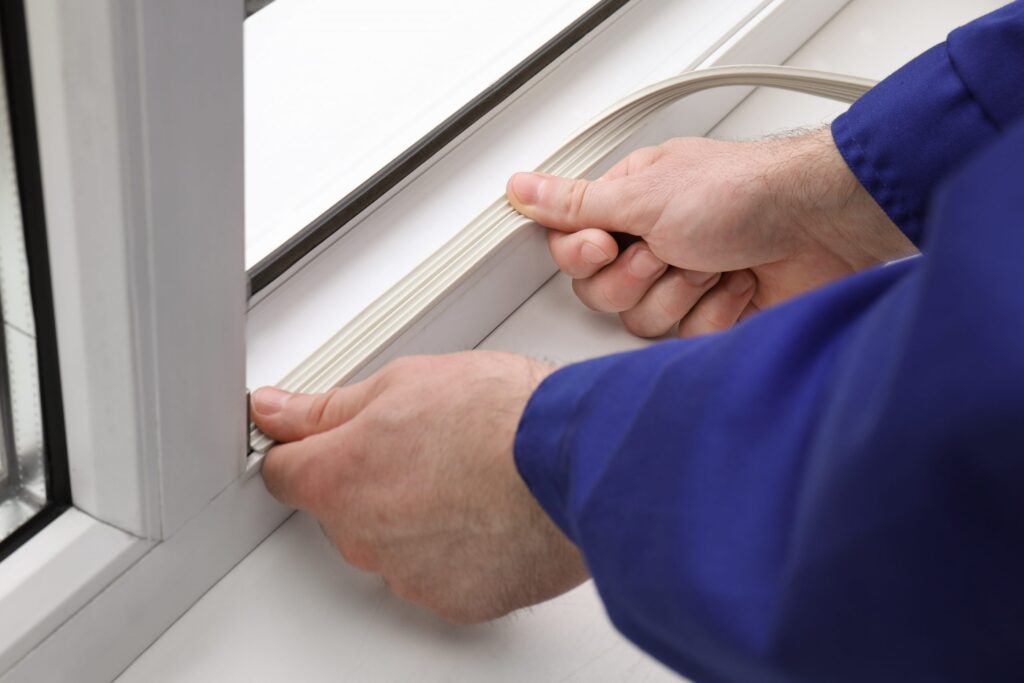
source: pinterest.com
Draught-proofing isn’t a one-off task. Regular checks and maintenance are crucial as sealants can deteriorate, rubber seals can be damaged and new gaps can form. Annually inspecting your home, especially before winter, ensures your draught-proofing measures remain effective during the colder months.
The rubber seals around your windows and doors may seem like a small detail but their significance cannot be understated. They play are a critical role in stopping draughts and are often a worthwhile investment in reducing your energy bills. For more information on replacement window seals, visit Seals Direct.

